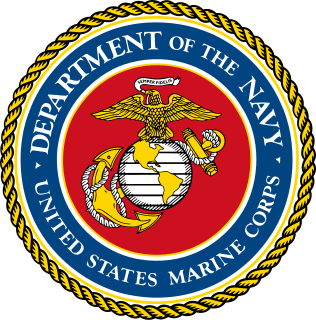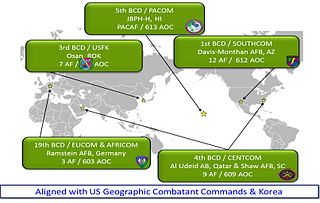Related Research Articles
Military doctrine is the expression of how military forces contribute to campaigns, major operations, battles, and engagements.

A battalion is a military unit. The use of the term "battalion" varies by nationality and branch of service. Typically a battalion consists of 300 to 800 soldiers and is divided into a number of companies. A battalion is typically commanded by a lieutenant colonel. In some countries, the word "battalion" is associated with the infantry.

Military ranks are a system of hierarchical relationships in armed forces, police, intelligence agencies or other institutions organized along military lines. The military rank system defines dominance, authority, and responsibility in a military hierarchy. It incorporates the principles of exercising power and authority into the military chain of command – the succession of commanders superior to subordinates through which command is exercised. The military chain of command constructs an important component for organized collective action.
In modern use, the order of battle of an armed force participating in a military operation or campaign shows the hierarchical organization, command structure, strength, disposition of personnel, and equipment of units and formations of the armed force. Various abbreviations are in use, including OOB, O/B, or OB, while ORBAT remains the most common in the United Kingdom. An order of battle is distinct from a table of organisation, which is the intended composition of a given unit or formation according to the military doctrine of its armed force. Historically, an order of battle was the order in which troops were positioned relative to the position of the army commander or the chronological order in which ships were deployed in naval situations.

A brigade is a major tactical military formation that is typically composed of three to six battalions plus supporting elements. It is roughly equivalent to an enlarged or reinforced regiment. Two or more brigades may constitute a division.

Sergeant is a rank in many uniformed organizations, principally military and policing forces. The alternative spelling, serjeant, is used in The Rifles and other units that draw their heritage from the British Light Infantry. Its origin is the Latin serviens, 'one who serves', through the French term sergent.

III Corps is a corps of the United States Army headquartered at Fort Hood, Texas. It is a major formation of the United States Army Forces Command.

The United States Army Reserve (USAR) is a reserve force of the United States Army. Together, the Army Reserve and the Army National Guard constitute the Army element of the Reserve components of the United States Armed Forces.

Established 1 July 1973, the United States Army Training and Doctrine Command (TRADOC) is a major command of the United States Army headquartered at Fort Eustis, Virginia. It is charged with overseeing training of Army forces and the development of operational doctrine. TRADOC operates 37 schools and centers at 27 different locations. TRADOC schools conduct 1,304 courses and 108 language courses. The 1,304 courses include 516,000 seats for 443,231 soldiers; 36,145 other-service personnel; 8,314 international soldiers; and 28,310 civilians.
A Corps Support Group, or CSG, was a brigade-sized unit in the United States Army. A CSG differs from a DISCOM in that it is a corps, not a divisional, asset. Doctrinally, a CSG serves corps units, not division units, but in practice CSGs typically have a close working relationship with a particular division especially in garrison. A CSG's subordinate units also may be parceled out to different commands in theater, thus their wartime organization will normally significantly differ from their garrison organization.

The 11th Signal Brigade of the United States Army is an element of Army Forces Command. It is based at Fort Hood, Texas. The unit mascot is the Thunderbird, a hawk-like bird perched upon a globe shooting thunderbolts out of its eyes. Soldiers in this unit call themselves "The Thunderbirds."
Marine Air-Ground Task Force is a term used by the United States Marine Corps to describe the principal organization for all missions across the range of military operations. MAGTFs are a balanced air-ground, combined arms task organization of Marine Corps forces under a single commander that is structured to accomplish a specific mission. The MAGTF was formalized by the publishing of Marine Corps Order 3120.3 in December 1963 "The Marine Corps in the National Defense, MCDP 1-0". It stated:
A regimental combat team (RCT) is a provisional major infantry unit of the United States Marine Corps to the present day and of the United States Army during World War II and the Korean War. It is formed by augmenting a regular infantry regiment with smaller tank, artillery, combat engineer, mechanized, cavalry, reconnaissance, signal corps, air defense, quartermaster, military police, medical, and other support units to enable it to be a self-supporting organization in the combat field.

The United States Marine Corps is organized within the Department of the Navy, which is led by the Secretary of the Navy (SECNAV). The most senior Marine commissioned officer is the Commandant of the Marine Corps, responsible for organizing, recruiting, training, and equipping the Marine Corps so that it is ready for operation under the command of the unified combatant commanders. The Marine Corps is organized into four principal subdivisions: Headquarters Marine Corps, the Operating Forces, the Supporting Establishment, and the Marine Forces Reserve.
In the United States Army, the term combat support refers to units that provide fire support and operational assistance to combat elements. Combat support units provide specialized support functions to combat units in the areas of chemical warfare, engineering, intelligence, security, and communications.
Combat arms is a collective name for troops within national armed forces which participate in direct tactical ground combat. In general they include units that carry or employ a weapon system, such as infantry, cavalry, and artillery units. The use of multiple combat arms in mutually supporting ways is known as combined arms.

The structure of the United States Army is complex, and can be interpreted in several different ways: active/reserve, operational/administrative, and branches/functional areas.

The 14th Military Police Brigade is a military police unit stationed at Fort Leonard Wood, in Missouri. The 14th Military Police Brigade provides the Army with Soldiers, DA Civilians, and leaders of character who provide the basic and advanced skills required to execute policing, detention, and security mobility support across the range of military operations.
Mission Command Training Program', based at Fort Leavenworth, Kansas, is the U.S. Army's only worldwide deployable Combat Training Center. MCTP provides full spectrum operations training support for senior commanders and their staffs so they can be successful in any mission in any operational environment. Its Senior Mentors counsel and offer their experience to Army senior commanders, subordinate commanders and staff. Additionally, MCTP's professional observer-trainers assist units with objective feedback and suggestions for improvement.

The Battlefield Coordination Detachment , or BCD, is the senior United States Army liaison element of the Army Air Ground System. The BCD serves as a bridge between the senior US Army headquarters element and the senior Air Force headquarters in each respective US combatant command or theater of operations. The BCD enables the coordination of Army-Air Force mission command, fire support, integrated air and missile defense, intelligence sharing, airspace management, and airlift. Additional space, cyber, and electronic warfare augmentation allow the BCD to further enable the designated Army force commander across the complete spectrum of warfare.
References
- ↑ Newman, Thomas J. (1993), Combat Service Support at Echelons Above Corps: The Doctrinal Challenge (PDF), School of Advanced Military Studies, US Army Command and General Staff College[ permanent dead link ]